The goal is to identify essential weight loss principles that you can use starting today for both medical and surgical patients. I’ll throw in a few “random thoughts” by Dr. Clark telling you my though process. One of my favorite quotes and favorite people, Albert Einstein, said “If you can’t explain it simply, then you don’t understand it well enough.” So, hopefully I can explain it simply.
It often seems like weight loss concepts and principles are significantly different between medical patients and surgical patients. Nothing could be further from the truth. The principles and concepts are exactly the same thing. The weight loss principles for a patient will be the same post weight loss surgery. They just have a slightly different anatomy. The essence of any weight loss plan will always be behavior modification. Change what you do, whether it’s nutritional or activity level. Change (weight loss) will not occur unless you change your behavior. Sometimes we’re waiting for the life around us to change or people around us the change. The reality is that’s never going to happen. If you don’t change, change will never occur. Don’t wait for someone else to change for you.
Energy storage is extremely important for survival. If we couldn’t store energy, we would have to eat continuously. We can store energy in 2 ways. We can store it as fat or we can store it as glycogen. Storing energy as fat is unlimited. We can store hundreds of pounds of fat. Even a thin persona has a lot of fat storage. Even a 200 pound male with 10% body fat has 70,000 available calories. That’s a lot of stored calories! We can’t store very much glycogen (sugar). We can only store about 2000 calories. Most of the glycogen is in the muscle. The muscle doesn’t like to give up any of this energy (it’s kinda selfish). The liver is unselfish. It will share sugar. What’s the problem with this? The problem is just because you may have a tremendous amount of stored energy as fat does not mean that you have unrestricted access to it. Unfortunately it’s not very accessible.
What do we do here at The Center for Weight Loss Success? We have 2 comprehensive programs. We also have a full fitness center, nutritional store, clinical area, educational classroom, behavior modification classes, weekly live webinars, weight loss meds, Hormone Replacement Therapy, and more. We have a 6 month medical program referred to as “Weight Management University™.” We have a 12 month post-surgical program called, “Weight Management for Weight Loss Surgery™.” Both of these programs are very similar. A lot of the topics in the programs are interchangeable. The medical program has 14 different topics. The surgical program has 12 topics. The difference is how we present them. We put them in different order because they become pertinent at different times depending if you’ve had surgery or not.
The real question is: how do you do it?? The dietary plan, activity plan, and behavior modification changes don’t take place immediately just because someone has undergone weight loss surgery. There should not be a “cloud of mystique” that surrounds someone who has had weight loss surgery. We didn’t change things by operating on you.
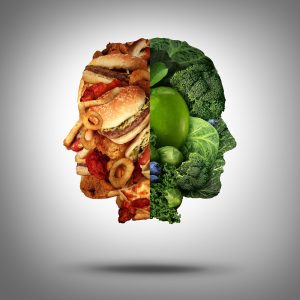 My job is to figure out why someone is overweight. Then, I have to figure out what are the right “things” to do for that individual. Finally, (the hard part), is how that individual implements those things and make them a lifestyle. Part of that is being willing and able to do those things in order to lose the weight. That’s a very important concept and mindset for anyone, especially with weight loss. Some people are just natural athletes. They may have never picked up a golf club. But when they do, they’re able to play pretty darn well. Other people might have to practice really hard but are mediocre at the sport. Is there a difference? Maybe some of us will never be pro golfers. But if we practice and work at it we will get better. All weight loss surgery does is just exaggerate the “normal” weight loss curve. The normal weight loss curve is this: you go on a specific diet and lose weight. Then you’re weight is going to stabilize. You might regain a little bit. With weight loss surgery you lose weight much quicker, greater weight loss, and it lasts longer. Long term it’s still doing all the same things. One of the “downfalls” of WLS is….it works! Because WLS works so well, people often think they’re doing the right things. You’re going to lose weight the first few months no matter what you do, but if you don’t do all the right things long term you will find that you’re going to start struggling. You need to do all the right things. Weight loss is something we work on forever. It’s a process. You’ve got to do the right things. Are you willing and able to do the right things?
My job is to figure out why someone is overweight. Then, I have to figure out what are the right “things” to do for that individual. Finally, (the hard part), is how that individual implements those things and make them a lifestyle. Part of that is being willing and able to do those things in order to lose the weight. That’s a very important concept and mindset for anyone, especially with weight loss. Some people are just natural athletes. They may have never picked up a golf club. But when they do, they’re able to play pretty darn well. Other people might have to practice really hard but are mediocre at the sport. Is there a difference? Maybe some of us will never be pro golfers. But if we practice and work at it we will get better. All weight loss surgery does is just exaggerate the “normal” weight loss curve. The normal weight loss curve is this: you go on a specific diet and lose weight. Then you’re weight is going to stabilize. You might regain a little bit. With weight loss surgery you lose weight much quicker, greater weight loss, and it lasts longer. Long term it’s still doing all the same things. One of the “downfalls” of WLS is….it works! Because WLS works so well, people often think they’re doing the right things. You’re going to lose weight the first few months no matter what you do, but if you don’t do all the right things long term you will find that you’re going to start struggling. You need to do all the right things. Weight loss is something we work on forever. It’s a process. You’ve got to do the right things. Are you willing and able to do the right things?
I’ll sometimes see people back in the office several years after having WLS. They’ve gained weight. Or, I see people who were successful in the Medical program but they return because they’ve gained weight back. No one gains weight due to a deficiency of surgery. Some people say they need surgery because they’re gaining weight. Likewise, no one gains weight due to a deficiency of phentermine or any other weight loss medication. They gain weight because they are eating and/or doing the wrong things. As physicians sometimes we contribute to that. There are certain medications that physicians prescribe that cause weight gain.
The concept of eating is, “How little can I eat and be satisfied.” It’s not, “How much can I cram in there.” The difference between those two thought processes is about 20-25%. It’s often the difference between losing weight and keeping it off, and gaining weight. Long-term the pattern of eating needs to be 3 meals a day +/- a planned snack. No one has ever starved in 3 hours. If your mind is telling you it’s time to eat something, but it’s not time to eat, drink some water or do something else. Meals should be small plate size. The best food has absolutely no labels. It’s eating green and clean.
The Basics
The “Basics” of the eating plan are calories, protein, and carbohydrates. Everyone has a calorie “ceiling.” If you go above it, you gain weight. It does not mean that if you stay below the calorie ceiling you will lose weight. You can’t survive without protein. Preserving lean body mass is key. We talk about this all the time. The best protein source is from food. Everyone has a carbohydrate “tipping point.” A certain level of carb intake makes insulin levels rise. Insulin turns on fat storage. Some people have a very high tipping point. They can eat just about whatever they want to and never gain a pound. They don’t have a better physiology. They have a more efficient physiology. If what you eat increases your insulin levels. It turns on fat storage. If you eat a mountain of lettuce and it makes your blood sugar go up, it will also make your insulin level go up. One thing you can do is get a blood sugar monitor and check your blood sugar after you eat.
I have a few things for you to “chew” on. “Kinda” working on weight loss will never help. You can’t, for example, do a good job during the week and then go crazy on the weekends. If you’re only going to do one thing, count your carbohydrate intake. Carbohydrate is not an essential nutrient and there is no such thing as carbohydrate deficiency. Carbohydrate influences insulin which is the “fat storage” hormone. If you don’t make insulin, you cannot store fat. One of the first symptoms of a Type I diabetic who does not make insulin is that they are losing weight like crazy. They can’t store fat. Two thirds of the population is “carb sensitive.” If they eat carbs they get large blood sugar swings. Large blood sugar swings cause 2 major problems: symptoms (headaches, irritability, shaky, not thinking clearly) and weight gain.
What do blood sugar swings actually mean?
If your blood sugar level is 100, what does that actually mean? That’s at the higher end actually. We would rather that it be 80. Each of us has about 5 liters of blood in our body. When we say that your blood sugar is 100 mg/dl, that means there is 5 grams of sugar in your entire blood volume. There’s 1 gram in each of those liters. How much sugar is 1 gram? If you have just 5 grams of carbohydrate, in theory you will double your blood sugar. If it was 100, it will jump to 200 after eating 5 grams of carbohydrate. Examples of 5 grams of sugar (1 tsp): ½ Oreo, 1 triscuit, 1/5 banana, ¼ apple, ¼ slice of bread. I often have patients come into the office and say, “Well I only had…” It only takes a little bit and you’ve doubled your blood sugar. The point of all this is that it doesn’t take much carbohydrate to give you tremendous blood sugar swings.
In review, the Basics of the eating plan include: a calorie ceiling, sufficient protein, and a carbohydrate tipping point. The trick is to figure out the numbers. If you’re a woman who’s had WLS, if you get about 1200 calories you’ll struggle. If you’re a man and get about 1500-1600 calories you’ll probably struggle. Protein is based on lean body mass. It almost always comes around 90-100grams/day. It depends on how big you are. A male with a much bigger frame is going to need more protein. We typically say less than 50 grams a day. Some patients are so sensitive they need to be in the 20-30 gram range to really see good weight loss. What about fat? I’m not concerned too much unless it drives your calories too high. You want to try and stick to the monounsaturated fats. There are good and bad fats. They do tend to influence calories. Fat does not affect the hormones the affect weight. Carbohydrate and protein do affect hormones that affect weight.
The best foods have no labels
The best foods have no labels. Eat just 3 things. We would die without water. Water is the best thing to drink. Get rid of everything else. Good protein sources are meat, seafood, cheese and eggs. They have basically no carbohydrates. Eat colorful vegetables/salad stuff which is typically low calorie, nutrient dense, and fairly low carbohydrate. If it falls outside the “core,” then don’t eat it!
 Dr. Clark’s low carb diet simplified (LCDS) is avoiding these three things: starches, “crumbly” carbs, and watching the fruit. Fruit can be the downfall of any weight loss plan. I’ve heard so many people say they eat healthy (including a lot of fruit). Fruit is healthy. There’s no doubt about that. However, it won’t help you lose weight. Healthy and losing weight are two different things. The main starches to avoid are potato, rice, pasta and bread. The “crumbly” carbs (6 “C”s) are chips, cookies, cereal, cake and candy. That includes hot cereal too. It’s simple to understand but NOT easy to do! Simple does not equate with easy.
Dr. Clark’s low carb diet simplified (LCDS) is avoiding these three things: starches, “crumbly” carbs, and watching the fruit. Fruit can be the downfall of any weight loss plan. I’ve heard so many people say they eat healthy (including a lot of fruit). Fruit is healthy. There’s no doubt about that. However, it won’t help you lose weight. Healthy and losing weight are two different things. The main starches to avoid are potato, rice, pasta and bread. The “crumbly” carbs (6 “C”s) are chips, cookies, cereal, cake and candy. That includes hot cereal too. It’s simple to understand but NOT easy to do! Simple does not equate with easy.
A good weight loss plan includes a good diet/nutrition plan, activity/exercise plan, and behavior modification. There is no difference between surgical and medical weight loss patients trying to lose weight. The hard part is behavior modification.
We can help you get started! Call us at 757-873-1880 to schedule a free consultation if you are interested in a non-surgical program or watch our free weight loss surgery webinar.
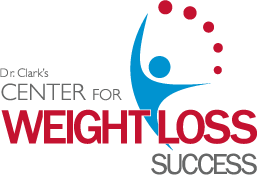
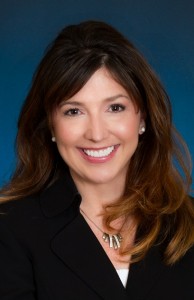
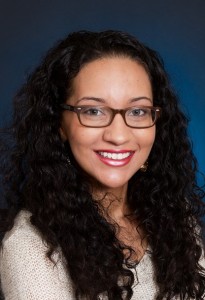

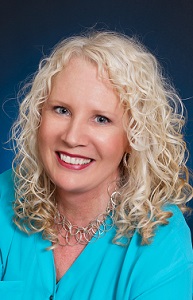
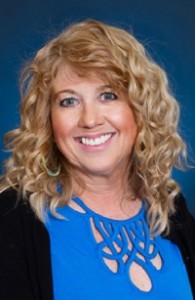
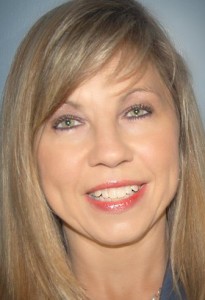 Cat Keller has a wealth of experience in marketing, e-marketing, advertising and customer service and manages our Weight Loss Nutritional Store. She is always planning something fun and exciting. special events, discounts, giveaways – it’s never a dull moment. She is happy to help you with questions you may have regarding our products or services. Cat is a graduate of William & Mary, where she studied Government/Pre-Law and minored in Marketing.
Cat Keller has a wealth of experience in marketing, e-marketing, advertising and customer service and manages our Weight Loss Nutritional Store. She is always planning something fun and exciting. special events, discounts, giveaways – it’s never a dull moment. She is happy to help you with questions you may have regarding our products or services. Cat is a graduate of William & Mary, where she studied Government/Pre-Law and minored in Marketing.